The greening of Dodger Stadium

In March, workers strain to get the field in perfect order before April’s opening day, but their efforts won’t let up then. During the season, the grass is kept at nine-sixteenths to three-quarters of an inch in height and mowed every game day. (Jamie Rector / For The Times)
The playing surface earlier this year at Dodger Stadium The park’s field is under a major renovation.
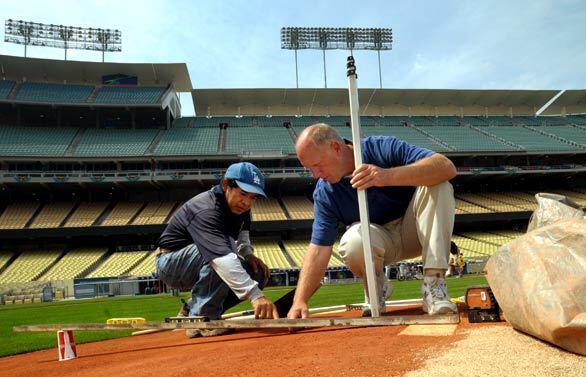
Jaime Huezo, left, and Eric Hansen work on the precise measurement of the pitching mound. It’s the dirt infield, not Hansen’s lovely, verdant outfield, that requires most of the crews work: Seven additional workers are brought in for game-day preparations. (Jamie Rector / For The Times)
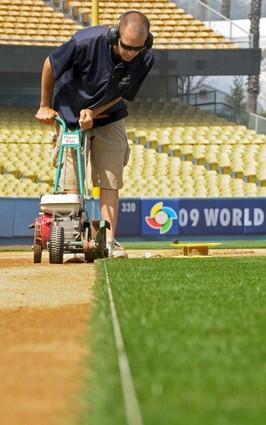
Jordan Lorenz edges the grass with care during the makeover’s advanced stage. Dodger Stadium’s turf actually has two crops: The original grass, a Bermuda hybrid, is overseeded with rye, which does better in the season’s early months. Later on, the rye begins to give way to the Bermuda grass, which better tolerates crushing heat. (Jamie Rector / For The Times)
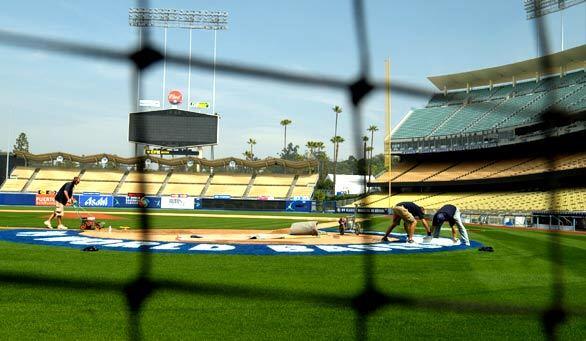
Dodger blue mixes with the rich green of the stadium lawn. The makeover that Eric Hansen and his crew undertook this spring is necessary when, after several years, one of the stadium’s two kinds of grass -- the rye grass -- adapts and refuses to go dormant during the summer, giving the field a scruffy appearance. (Jamie Rector / For The Times)
Advertisement
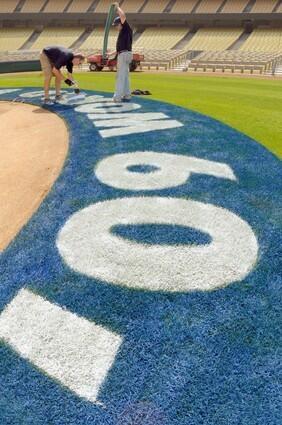
Dan Mudd, left, and Terry Kiser paint the grass on the field, for which, by the way, moisture management is vital. Head groundskeeper Hansen doesnt keep his sprinklers on a clock; he determines on his own when to activate the 10 zones. An underground system allows him to water the grass from below during dry periods. (Jamie Rector / For The Times)
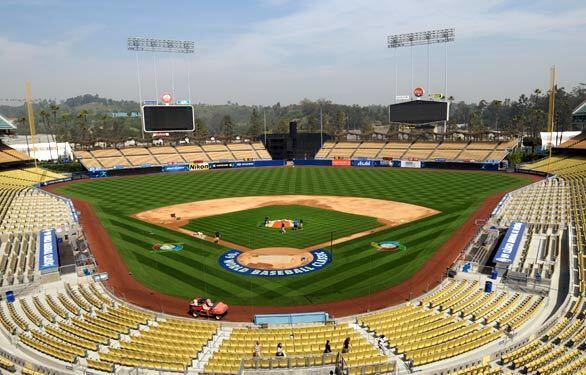
Late in March, one of baseball’s finest fields looks ready for action -- just add fans. As for the labors to upgrade and maintain the sparkling field, Eric Hansen says, You can see theres a lot of science to it, But theres a lot more art. You get a feel for things and thats how you do it ... thats the art of it. (Jamie Rector / For The Times)







